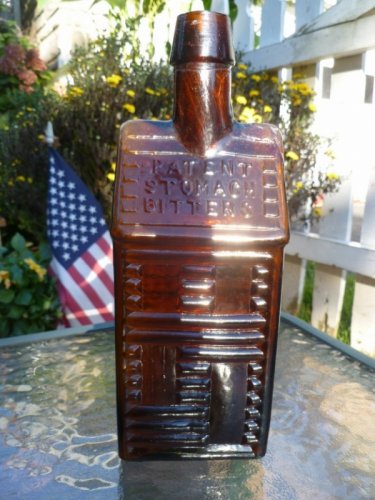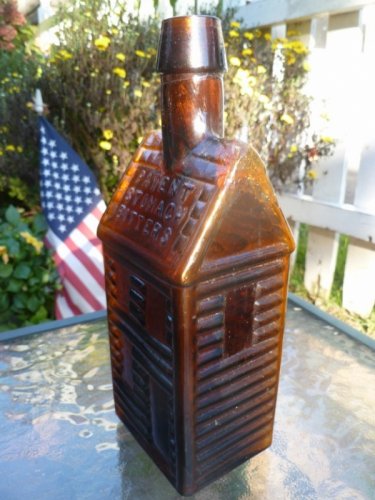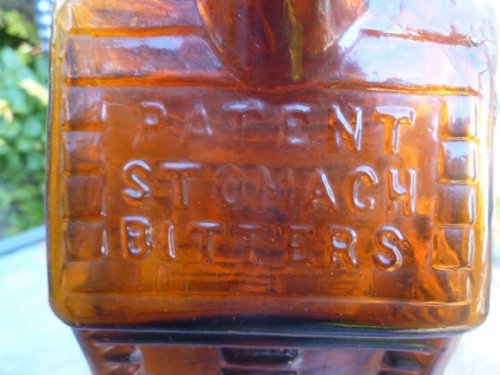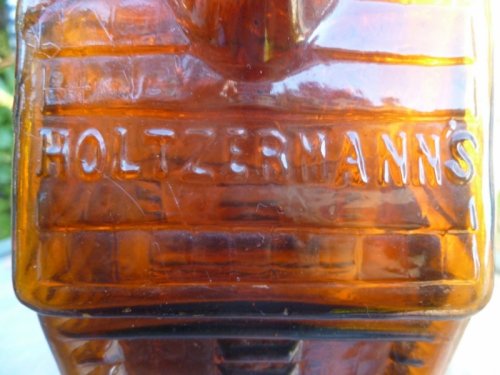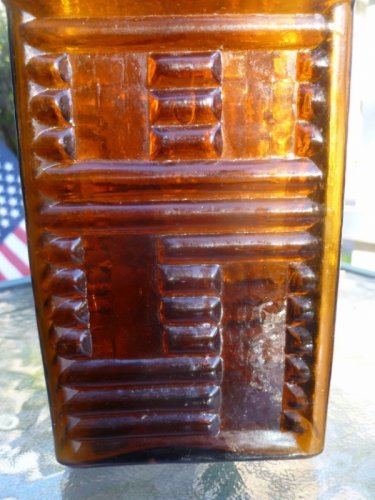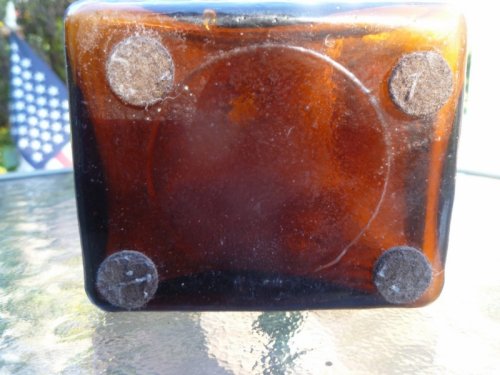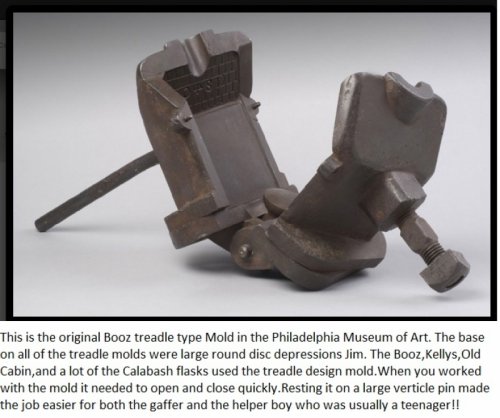Steve/sewell
Well-Known Member
- Joined
- Jan 23, 2010
- Messages
- 6,108
- Reaction score
- 5
- Points
- 0
Christopher August Holtzermann was born on Aug 20, 1840 in Piqua, Ohio.He was the son of Jacob Daniel Holtzermann and Johanna L. Dettmer. He appeared on the 1850 Federal Census of Piqua, Washington Township, Miami County, Ohio in the household of his parents. He appeared on the 1860 Federal Census of Piqua, Miami County, Ohio in the household of his parents. Christopher married his second cousin Elise Schetter, daughter of Heinrich Friederich Ludwig Schetter and Tibetha Gertrude Holtzermann, on Nov 26, 1863 in Piqua. Christopher and Elise appeared on the 1870 Federal Census of Piqua, Miami County, Ohio, enumerated Jul 1, 1870, with their children Johanna, George, Louis and Jacob.
Piqua was originally a small hamlet originally developed as a combination of log/frame homes, small shops, taverns and inns, and small family-based industries. Early crossroads began the community’s growth as a marketing center for the surrounding farm lands. The first brick residences were constructed along Main Street in 1819 and began the community’s true architectural history. The first local building style reflected Federal style elements with very little ornamentation. These local Federal Style homes were very restrained by today’s standards, but in the 1820s and 1830s reflected prosperity and high style.
The completion of a segment of the Miami & Erie Canal to Piqua in 1837 promoted the next growth period up through 1860. Canal traffic encouraged the construction of shops fronting on both Main Street and the canal. Imposing Greek Revival Style homes began to be built within two blocks to the east and west of Main Street. These new homes added a wealth of architectural detail to the same basic rectangular design of the earlier Federal Style. The local commercial versions of the Greek Revival Style during the 1840s and 1850s, with their plain stone lintels, were a bit more modest in their use of architectural detailing. However, the builders of these solid two and three story brick shops began to change the street scape of the town by filling in the vacant lots and demolishing the log and frame shops along Main Street.
This commercial growth began pushing the residential center to Wayne Street and the manufacturing center to Spring Street. The Columbus, Piqua and Indiana Railroad reached the downtown in 1856 and led to the led to the third building boom from 1860 through 1880. During this era, the Italianate style flourished in both residential and commercial variations. Two and three story brick shops with narrow and elongated windows were built on Main Street. The first and largest of these new Italianate buildings was completed in the 1860s on the northwest corner of the square. For the next twenty years this style dominated the downtown with its restrained yet prominent window hood molds and cornice brackets. The long narrow open floor shops filled the first floors while the upper floors were reserved for residences, offices, and lodge halls.
It was in this last growth spurt in the early 1860s that Christopher August Holtzermann went in to business a local domestic Liquor Merchant and Druggist who had a small store at the corner of Main and Water Streets. On May 7, 1867 Charles August Holtzermann patented his formula for bitters — Composed of pure spirits, sugar, orange peel, orange apple, oms root, galanga root, gentian root, calamus root, wormwood, ginger,cardamon seed, cassia, mace, nutmeg, cloves, and coriander seed.
In 1871 he advertised Holtzermann's Stomach Bitters For Sale Here! August Holtzermann Wholesale Dealer in Foreign and Domestic Liquors. Located on the Corner Of Main & Water Streets. Piqua, Ohio the large liquor house on the corner of Main and Water Streets, where are also manufactured the celebrated Holtzermann's Patent Stomach Bitters, which are very extensively sold through Western Ohio, Indiana and Illinois.
The bitters were bottled in a two story Cabin Shaped bottle. Most Liquor merchants were still reeling from the Federal raids which had occurred in the late 1860s on Liquor dealers who were accused of avoiding taxes on Whiskey by simply calling their product bitters. Business went well and Christopher amassed a fortune in a short time. Business was still booming but Christopher fell ill in June of 1875. He never recovered and died a month later on Jul 6, 1875 in Piqua at the young age of 34. He was buried on Jul 7, 1875 in Forest Hill Cemetery, Piqua.
His son Louis J. Holtzermann was born on Sep 18, 1864, a second son Jacob Daniel Holtzermann was born on September 10th, 1869. With their fathers unexpected death first Louis and then Jacob were both forced to work at a very early age in the company store. Jacob was quite the business man by the age of 17 in 1886. He and his brother Louis were now expanding the business. J.D. Holtzermann & Co, Wholesale Dealers in Foreign and Domestic Liquors located at the Corner Of Main & Water Streets Piqua Ohio have sucessfuly opened a second business located in Minneapolis Minnesota. The large department store opened in 1887. They continued to carry the Bitters which had made them wealthy men at a young age.
The two roof bitters bottle embossed Holtzermann's on one roof panel and Patent Stomach Bitters on the other evolved into the 4 roof version which was embossed on one roof Panel Holtermanns Patent Stomach Bitters. The cabin design lasted until 1885 and then a completely different version a 4 sided square one like most of the other bitters bottles of the day.The 2 roof variants are somewhat rare and proof versions of those are extremely rare. The square shaped 1885 to 1910 version Which is embossed Holtzermanns/ Stomach/ Bitters on one panel and then on the opposite panel the embossing reads J. D. Holtzermann & Co./ Piqua O. is actually listed by Ring and Ham as Extremely rare.A small salesmen sized ( 4 1/2 inches tall ) 4 roof Cabin version is also a rare bottle. A back bar bottle with a twisted neck embossed Holtzermanns Stomach Bitters is also listed as a very rare bottle.
Ring and Ham in their book list the original proprietor of Holtermanns Bitters as J D ( Jacob Daniel ) Holtzermann and stated it was he who took out the patent in 1867. This was immpossible as he was not born until the end of 1869. It was his father Christopher or August as he was known in the German Community who first patented the bitters. Who wants to call or email Ring and Ham and have them update their book....Not me Ill just make a note in mine....... My bottle is the 2 roof version the oldest one.

Piqua was originally a small hamlet originally developed as a combination of log/frame homes, small shops, taverns and inns, and small family-based industries. Early crossroads began the community’s growth as a marketing center for the surrounding farm lands. The first brick residences were constructed along Main Street in 1819 and began the community’s true architectural history. The first local building style reflected Federal style elements with very little ornamentation. These local Federal Style homes were very restrained by today’s standards, but in the 1820s and 1830s reflected prosperity and high style.
The completion of a segment of the Miami & Erie Canal to Piqua in 1837 promoted the next growth period up through 1860. Canal traffic encouraged the construction of shops fronting on both Main Street and the canal. Imposing Greek Revival Style homes began to be built within two blocks to the east and west of Main Street. These new homes added a wealth of architectural detail to the same basic rectangular design of the earlier Federal Style. The local commercial versions of the Greek Revival Style during the 1840s and 1850s, with their plain stone lintels, were a bit more modest in their use of architectural detailing. However, the builders of these solid two and three story brick shops began to change the street scape of the town by filling in the vacant lots and demolishing the log and frame shops along Main Street.
This commercial growth began pushing the residential center to Wayne Street and the manufacturing center to Spring Street. The Columbus, Piqua and Indiana Railroad reached the downtown in 1856 and led to the led to the third building boom from 1860 through 1880. During this era, the Italianate style flourished in both residential and commercial variations. Two and three story brick shops with narrow and elongated windows were built on Main Street. The first and largest of these new Italianate buildings was completed in the 1860s on the northwest corner of the square. For the next twenty years this style dominated the downtown with its restrained yet prominent window hood molds and cornice brackets. The long narrow open floor shops filled the first floors while the upper floors were reserved for residences, offices, and lodge halls.
It was in this last growth spurt in the early 1860s that Christopher August Holtzermann went in to business a local domestic Liquor Merchant and Druggist who had a small store at the corner of Main and Water Streets. On May 7, 1867 Charles August Holtzermann patented his formula for bitters — Composed of pure spirits, sugar, orange peel, orange apple, oms root, galanga root, gentian root, calamus root, wormwood, ginger,cardamon seed, cassia, mace, nutmeg, cloves, and coriander seed.
In 1871 he advertised Holtzermann's Stomach Bitters For Sale Here! August Holtzermann Wholesale Dealer in Foreign and Domestic Liquors. Located on the Corner Of Main & Water Streets. Piqua, Ohio the large liquor house on the corner of Main and Water Streets, where are also manufactured the celebrated Holtzermann's Patent Stomach Bitters, which are very extensively sold through Western Ohio, Indiana and Illinois.
The bitters were bottled in a two story Cabin Shaped bottle. Most Liquor merchants were still reeling from the Federal raids which had occurred in the late 1860s on Liquor dealers who were accused of avoiding taxes on Whiskey by simply calling their product bitters. Business went well and Christopher amassed a fortune in a short time. Business was still booming but Christopher fell ill in June of 1875. He never recovered and died a month later on Jul 6, 1875 in Piqua at the young age of 34. He was buried on Jul 7, 1875 in Forest Hill Cemetery, Piqua.
His son Louis J. Holtzermann was born on Sep 18, 1864, a second son Jacob Daniel Holtzermann was born on September 10th, 1869. With their fathers unexpected death first Louis and then Jacob were both forced to work at a very early age in the company store. Jacob was quite the business man by the age of 17 in 1886. He and his brother Louis were now expanding the business. J.D. Holtzermann & Co, Wholesale Dealers in Foreign and Domestic Liquors located at the Corner Of Main & Water Streets Piqua Ohio have sucessfuly opened a second business located in Minneapolis Minnesota. The large department store opened in 1887. They continued to carry the Bitters which had made them wealthy men at a young age.
The two roof bitters bottle embossed Holtzermann's on one roof panel and Patent Stomach Bitters on the other evolved into the 4 roof version which was embossed on one roof Panel Holtermanns Patent Stomach Bitters. The cabin design lasted until 1885 and then a completely different version a 4 sided square one like most of the other bitters bottles of the day.The 2 roof variants are somewhat rare and proof versions of those are extremely rare. The square shaped 1885 to 1910 version Which is embossed Holtzermanns/ Stomach/ Bitters on one panel and then on the opposite panel the embossing reads J. D. Holtzermann & Co./ Piqua O. is actually listed by Ring and Ham as Extremely rare.A small salesmen sized ( 4 1/2 inches tall ) 4 roof Cabin version is also a rare bottle. A back bar bottle with a twisted neck embossed Holtzermanns Stomach Bitters is also listed as a very rare bottle.
Ring and Ham in their book list the original proprietor of Holtermanns Bitters as J D ( Jacob Daniel ) Holtzermann and stated it was he who took out the patent in 1867. This was immpossible as he was not born until the end of 1869. It was his father Christopher or August as he was known in the German Community who first patented the bitters. Who wants to call or email Ring and Ham and have them update their book....Not me Ill just make a note in mine....... My bottle is the 2 roof version the oldest one.


